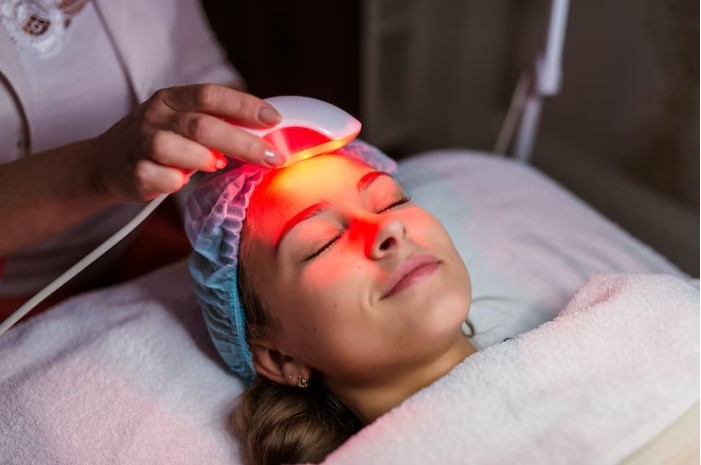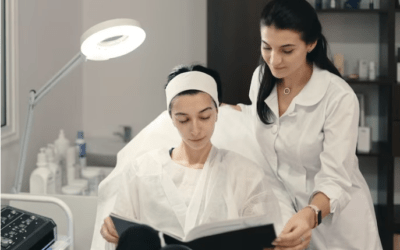In recent years, LED light therapy has emerged as a popular and effective skincare treatment. Leveraging the power of light at different wavelengths, this non-invasive approach has shown remarkable results in addressing various skin concerns, including acne, wrinkles, and inflammation. In this comprehensive exploration of professional treatment, we will delve into the intricacies of LED light therapy, its specific applications, and the benefits it offers to enhance skin health.
Understanding LED Light Therapy
LED Light Therapy Defined
LED light therapy, also known as phototherapy, utilizes light-emitting diodes (LEDs) to deliver specific wavelengths of light to the skin. These wavelengths penetrate the skin at different depths, stimulating cellular processes and promoting various therapeutic effects. The skin treatment itself is non-thermal, meaning it does not produce heat, making it a safe and comfortable option for skincare.
Light Therapy: A Historical Perspective
The concept of light therapy dates back to ancient civilizations, where sunlight was harnessed for its healing properties. In modern times, technological advancements have allowed for the targeted use of different light wavelengths for therapeutic purposes in skin cancer. LED light therapy has gained prominence due to its versatility and ability to address a wide range of skin issues.
The Spectrum of Light: Blue Light in Focus
Blue Light and Its Effect on Skin
Among the different wavelengths used in LED therapy, blue light therapy has garnered attention for its efficacy in treating acne. Acne, a common skin condition, is often caused by the presence of Propionibacterium acnes (P. acnes) bacteria. Blue LED light therapy has been shown to eliminate this acne-causing bacteria, offering a non-invasive alternative to traditional treatments.
Benefits of Blue LED Light Therapy
Blue LED light therapy provides several benefits in treating acne. It not only kills acne-causing bacteria but also reduces inflammation, a key factor in the development of acne breakouts. Additionally, blue LED light therapy helps regulate oil glands, addressing the root causes of acne and promoting clearer skin.
Clinical and Histological Evaluation of Blue LED Light Therapy
Numerous studies have investigated the effectiveness of blue LED light therapy in clinical settings. A controlled trial involving patients with acne demonstrated a significant reduction in lesions after a series of blue LED light treatments. Histological evaluations further revealed an increase in intradermal collagen density, highlighting the potential of this therapy for improving overall skin health.
Combating Acne: Blue LED Light vs. Other Treatments
When compared to traditional acne treatments, such as chemical peels or certain medications, blue LED light therapy stands out for its non-invasive nature and the few risks associated with the treatment. Unlike some medications that may have side effects, blue LED light therapy offers a more painless treatment and well-tolerated alternative for individuals seeking relief from acne.
Beyond Blue: Exploring Red LED Light Therapy
Red LED Light Therapy and its Applications
While blue LED light therapy targets acne, red LED light therapy focuses on skin rejuvenation and the reduction of fine lines and wrinkles. Red light penetrates the skin at a deeper level, stimulating cellular activity and promoting the production of collagen, a crucial protein for maintaining skin elasticity.

Fine Lines and Wrinkles: Addressing the Signs of Aging
The natural aging process often leads to the development of fine lines and wrinkles. Red LED light therapy offers a non-invasive solution to combat these signs of aging. By stimulating collagen production, this therapy helps improve skin texture and reduce the appearance of fine lines, providing skin feeling a more youthful and rejuvenated appearance.
Red LED Light vs. Other Anti-Aging Treatments
In comparison to invasive procedures like cosmetic injectable treatments or laser therapy, red LED light therapy offers a gentler approach with minimal risks. The treatment stimulates collagen without the need for injections or surgical interventions, making it an attractive option for those seeking anti-aging effects without the associated downtime.
The Science Behind LED Light Therapy
How LED Light Therapy Works at the Cellular Level
Understanding the mechanisms of LED light therapy sheds light on its efficacy in promoting skin health. At the cellular level, LED light penetrates the skin, reaching the mitochondria—the powerhouse of cells. This interaction with the mitochondria stimulates the production of adenosine triphosphate (ATP), the energy currency of cells, leading to increased cellular activity and enhanced healing processes reduce inflammation.
Stimulating Collagen: A Key to Skin Health
Collagen, a structural protein in the skin, plays a crucial role in maintaining its firmness and elasticity. using LED lights and light therapy, particularly red light, stimulates collagen production. This increase in collagen helps improve skin texture, reduce the appearance of fine lines, and contribute to an overall more youthful complexion.
Wound Healing and LED Light Therapy
The healing process is a complex series of events involving various cellular activities. LED light therapy has been found to accelerate wound healing by promoting the proliferation of fibroblasts, the cells responsible for producing collagen and supporting tissue repair. This makes LED therapy a valuable adjunct in addressing wounds, including those resulting from surgical procedures or injuries.
Diverse Applications of LED Light Therapy
Beyond Acne and Aging: Addressing Various Skin Conditions
LED light therapy extends its benefits beyond acne treatment and anti-aging. It has shown efficacy in treating other skin conditions, including sun damage, inflammation, and certain dermatological concerns. The versatility of LED light therapy makes it a valuable option for individuals with diverse skin woes.
Reducing Inflammation with LED Light Therapy
LED light therapy, particularly at specific wavelengths, has anti-inflammatory effects. By reducing inflammation, LED therapy can provide relief to individuals with conditions such as rosacea or general skin sensitivity.
Targeting Acne Bacteria and Other Skin Concerns
The ability of LED light therapy to eliminate acne-causing bacteria extends its applicability to various skin concerns. From treat acne to addressing active rashes to reducing the risk of third-degree skin burns, LED therapy offers a versatile and targeted approach to different dermatological issues.
Professional and At-Home LED Light Therapy
Professional LED Light Therapy Treatments
In a clinical setting, LED light therapy is often administered by skincare professionals, including dermatologists and estheticians. These professionals use specialized LED devices with controlled wavelengths to see skin cells and tailor treatments to the specific needs of each individual. Professional treatments may involve a series of sessions for optimal results.
At-Home LED Devices: A Convenient Option
Advancements in technology have made at-home LED devices accessible to consumers. These devices, ranging from handheld wands to masks, allow individuals to experience the benefits of LED light therapy in the comfort of their homes. While at-home devices may have slightly lower intensity than professional ones, they can still contribute to ongoing skincare maintenance.
Maintenance Treatments for Long-term Results
Whether administered professionally or at home, LED light therapy often requires multiple sessions for optimum results. Maintenance treatments are essential to sustain the benefits achieved. Regular sessions help support collagen production, maintain skin rejuvenation, and address ongoing skin concerns.
Considerations and Future Directions
Safety and Considerations for LED Light Therapy
LED light therapy is generally considered safe with few reported side effects. However, individuals with certain medical conditions or those taking specific medications should consult with a healthcare professional before undergoing LED therapy. As with any skincare treatment, it’s crucial to follow recommended guidelines and seek professional advice when needed.
Future Directions in LED Therapy Research
The field of LED light therapy continues to evolve, with ongoing research exploring new applications of light therapies and refining existing protocols. Researchers are investigating the potential of near-infrared light treatment, which may penetrate the skin at greater depths, offering additional benefits for specific skin concerns. As technology advances, the efficacy of LED therapy is likely to be further optimized.
Conclusion
LED light therapy has emerged as a revolutionary approach in skin care, offering a non-invasive and effective solution for various skin conditions. From targeting acne-causing bacteria with blue LED light therapy to stimulating collagen production with red LED light therapy, the versatility of LED skin treatments also makes them a valuable option for individuals seeking to improve their skin health.
As the science behind LED light therapy continues to unravel, its applications other skin treatments are expanding, offering potential benefits for diverse skin concerns. Whether administered by skin care professionals in a clinical setting or through at-home devices, LED light therapy has become a go-to option for those looking for a painless and convenient solution to address their skin woes. As research progresses, the future holds promising developments that may further enhance the efficacy and scope of LED light therapy in skin care.




